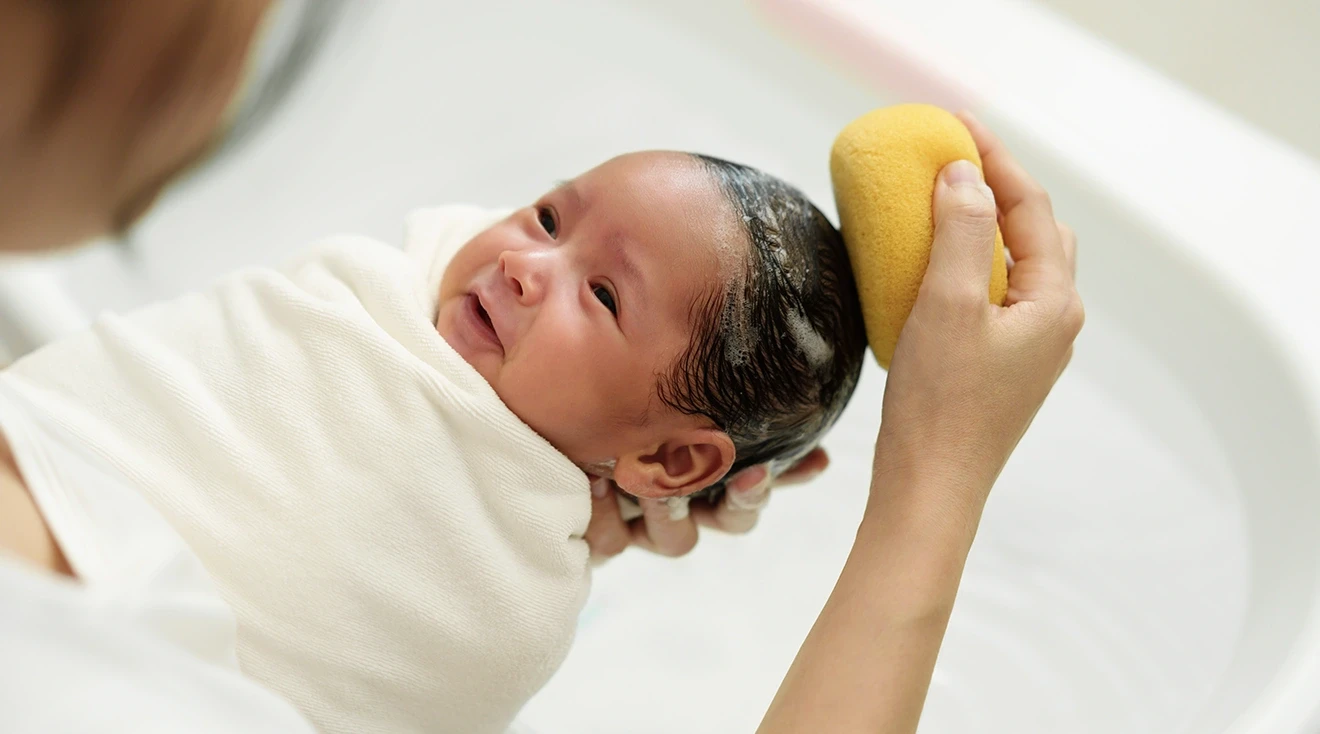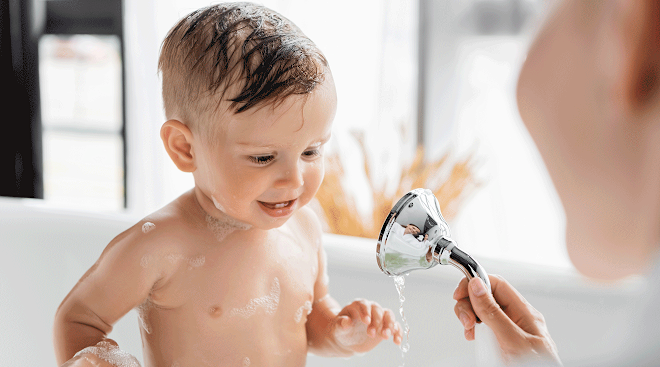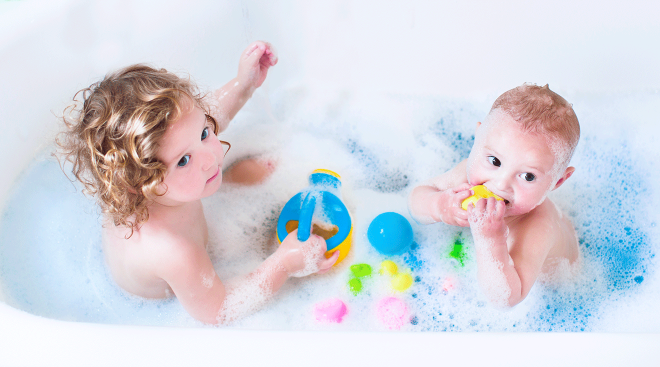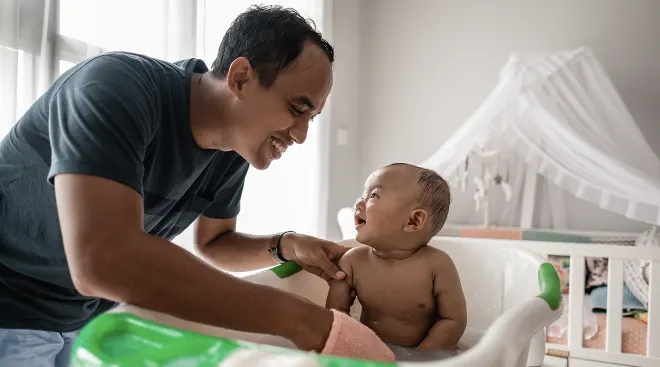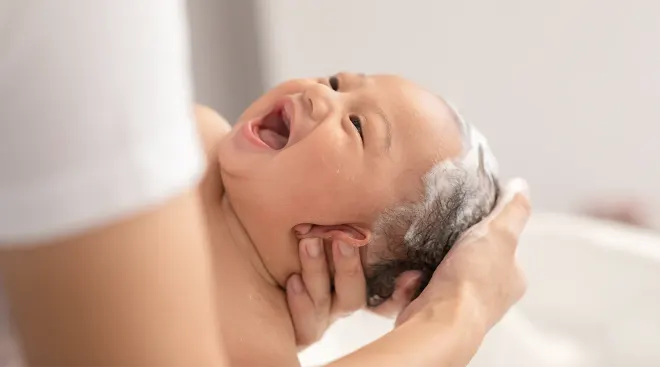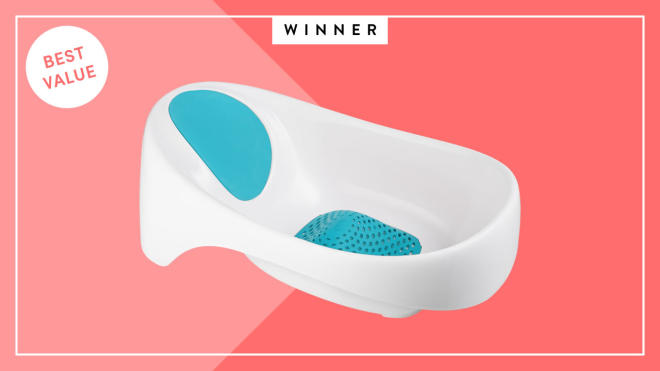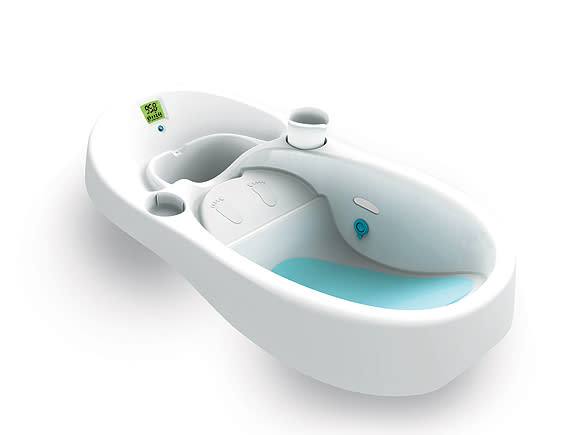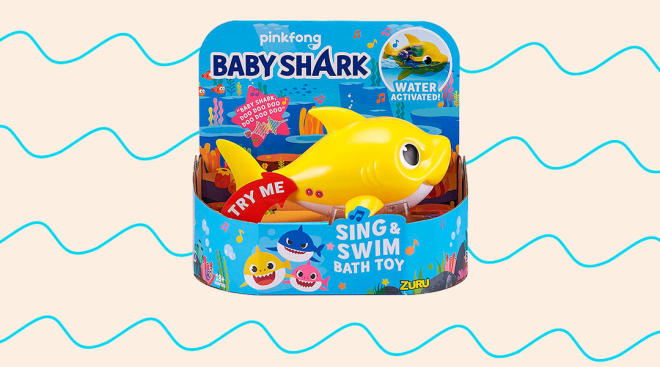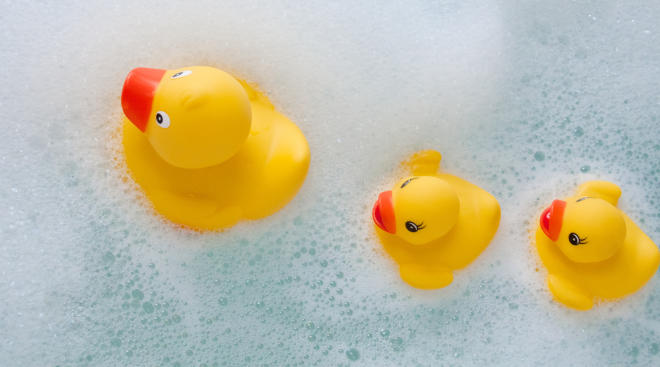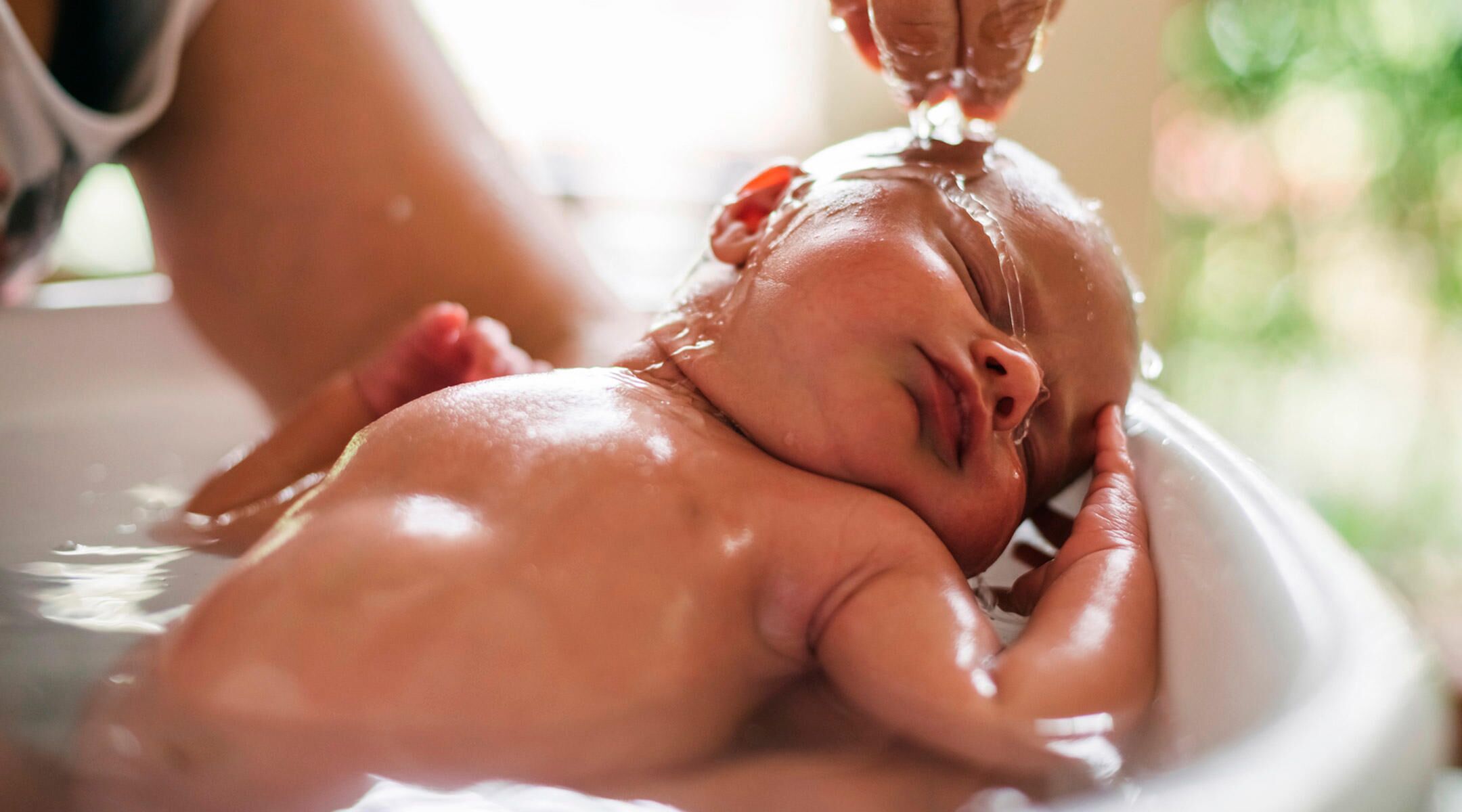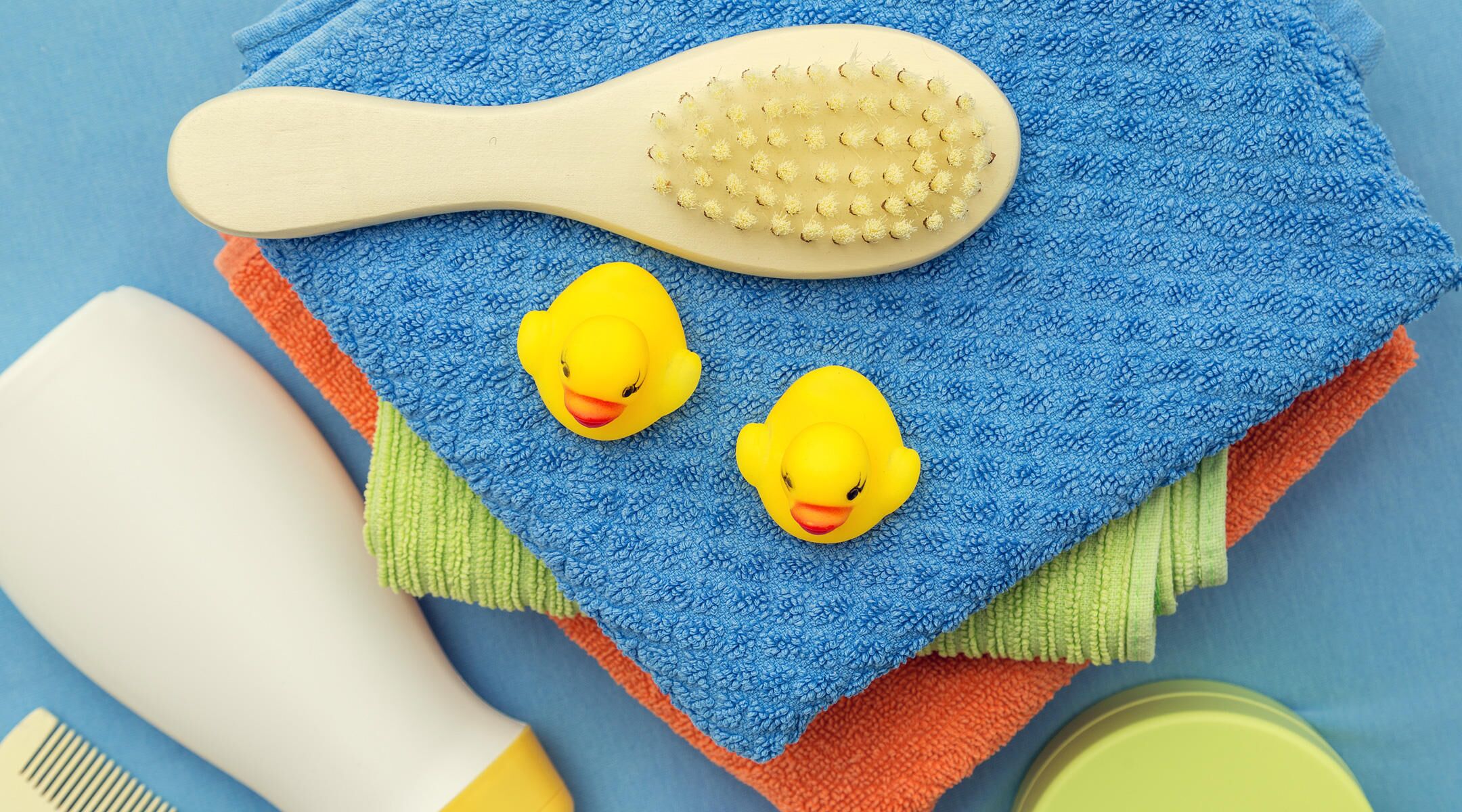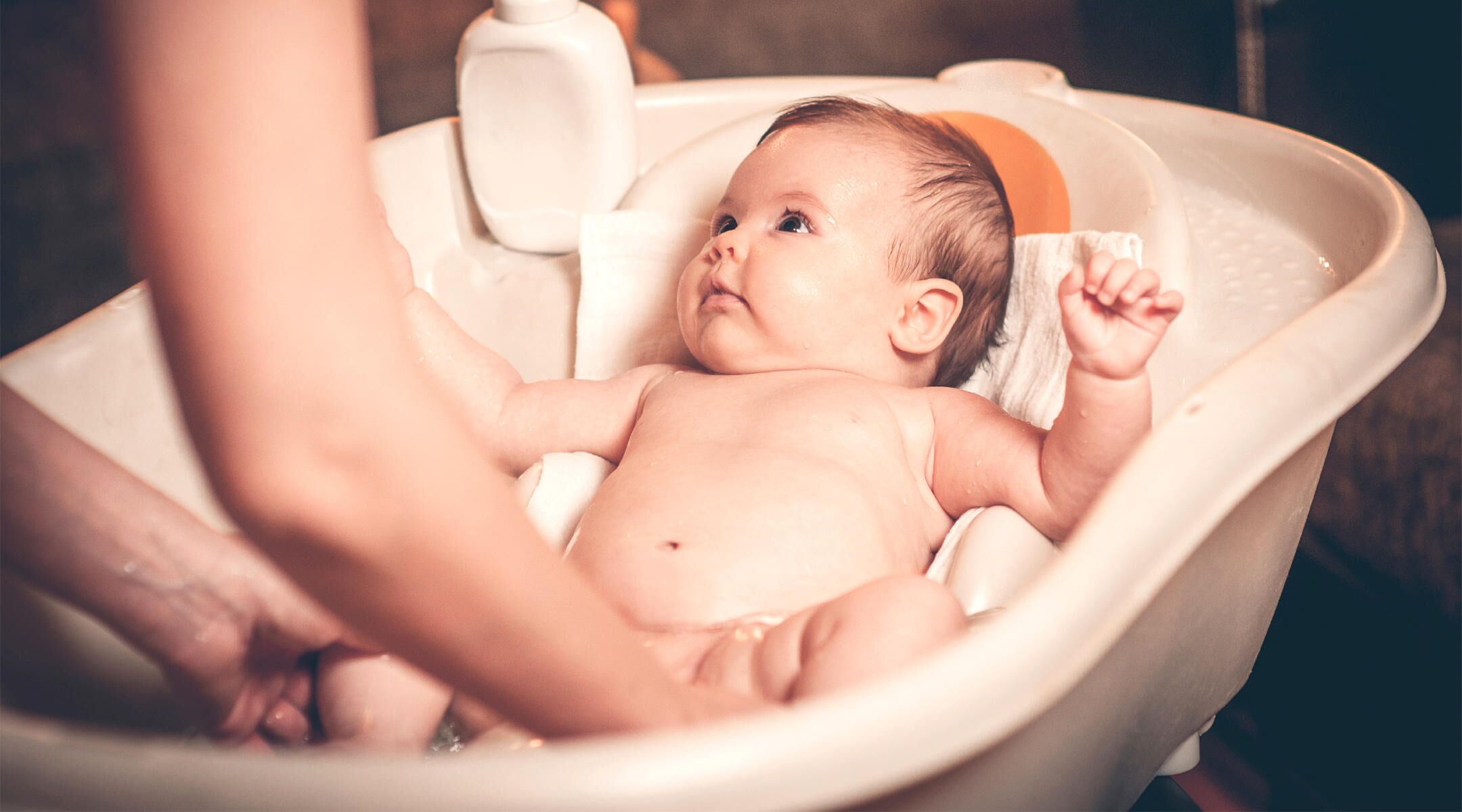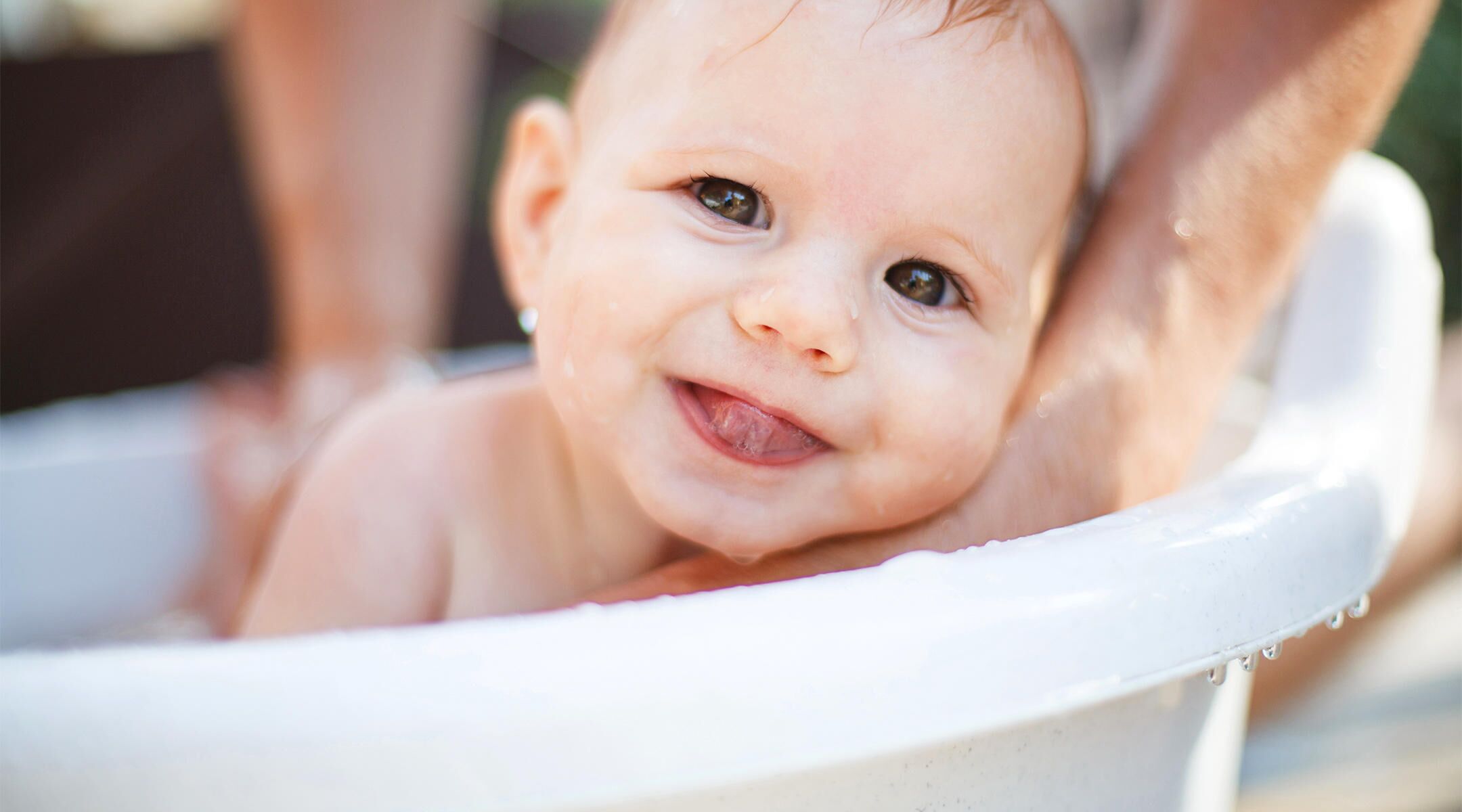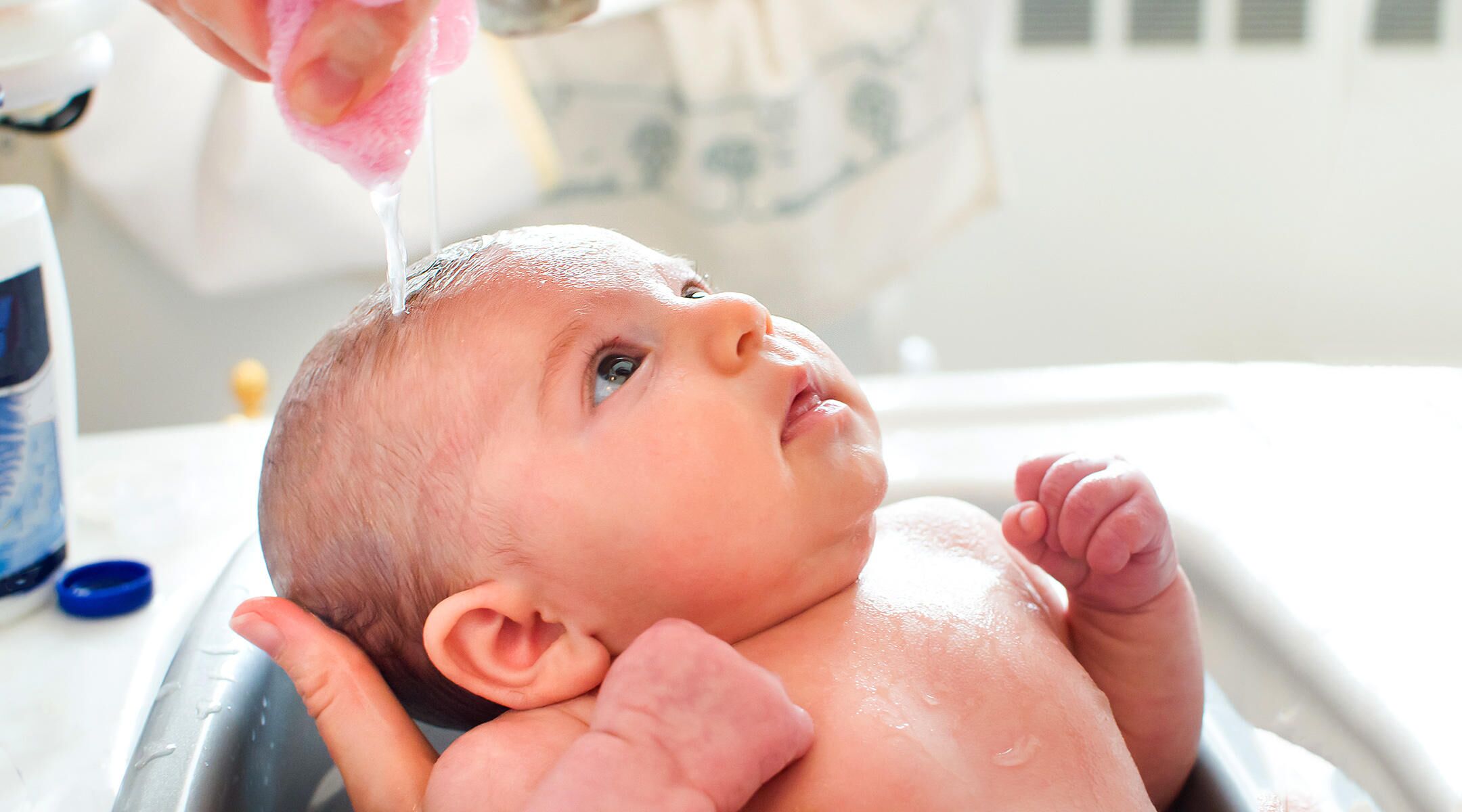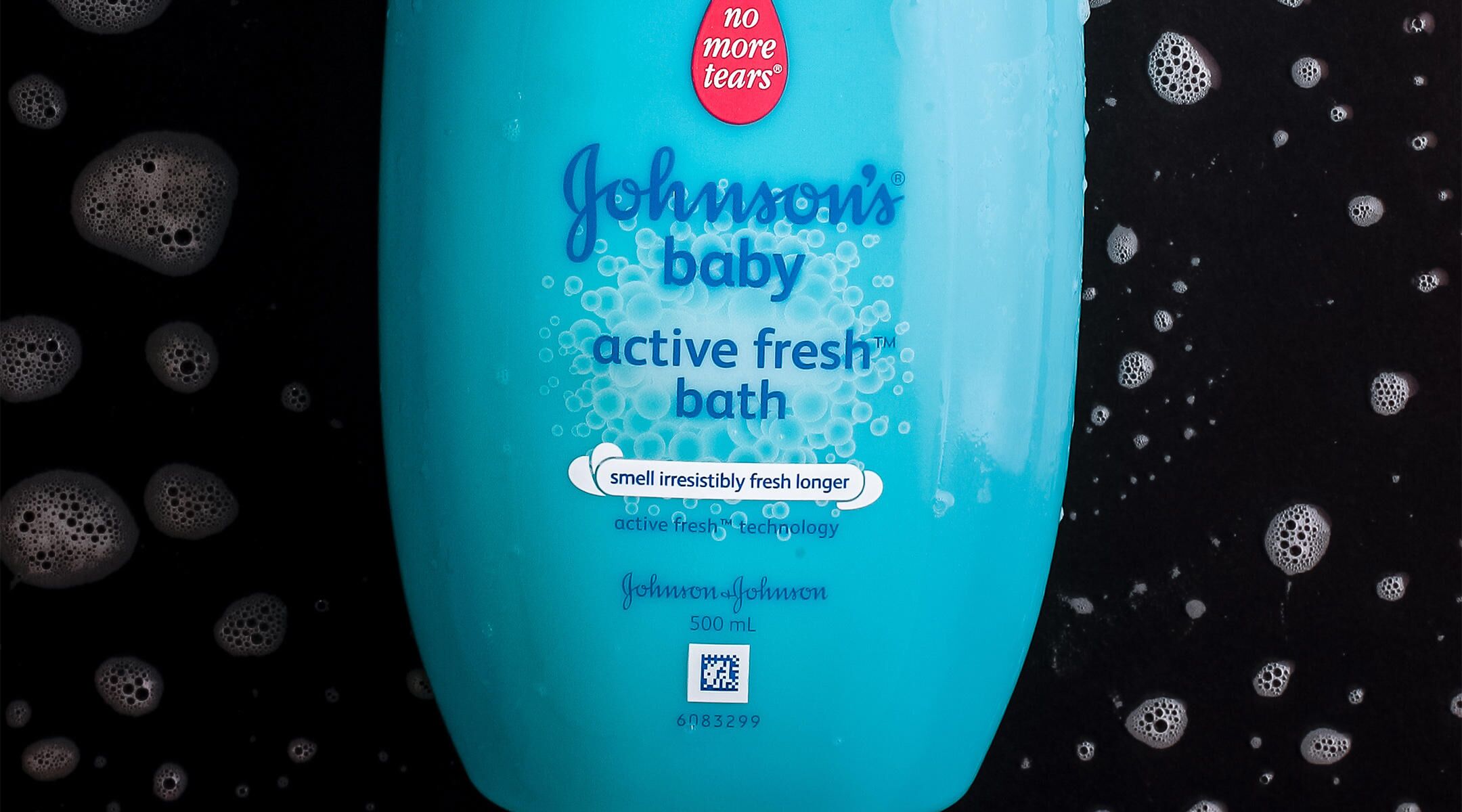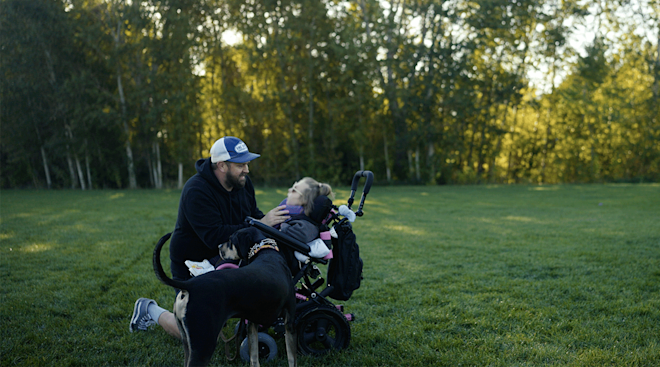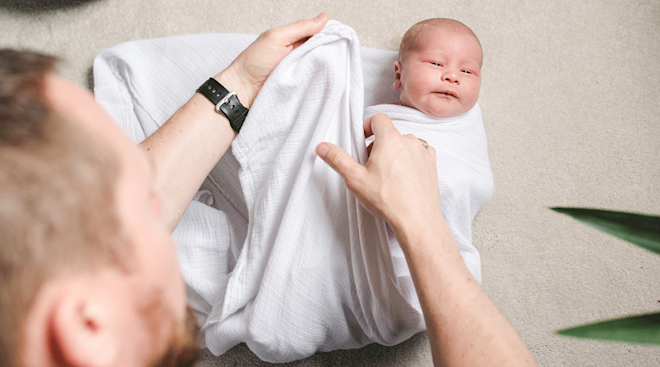What You’ll Need to Know About Baby’s First Bath
You’ve gotten all the essential baby gear, set up the nursery and brought your newborn home from the hospital. But when it comes time for baby’s first bath, there are suddenly so many questions. When can I give my newborn a bath? How often should you bathe a newborn? And what’s the right newborn bath temperature? Not to worry. We’ve got all the bases covered to prep you for baby’s first bath—and beyond.
It used to be the norm at hospitals to whisk newborns away right after birth for a bath. Not anymore. Recommendations have shifted in favor of waiting at least a few hours, if not longer, for baby’s first bath (the World Health Organization recommends a 24-hour delay). (It’s important to note, there are some exceptions to this recommendation, according to the American Academy of Pediatrics (AAP): If baby has been exposed to certain pathogens during birth, such as HSV, HIV, hepatitis B or hepatitis C, a more immediate bath may be advisable.)
The AAP and Katherine Williamson, MD, a pediatrician at Children’s Hospital of Orange County in Orange, California, indicates that there may be significant physical and emotional benefits to delaying that initial newborn bath. Since young babies are especially sensitive to cold, it can decrease cold stress, Williamson says. “Cold-induced stress can cause the body to work to keep itself warm, which can cause blood sugar levels to drop,” she explains, citing studies that show delaying baby’s first bath decreases rates of hypothermia and hypoglycemia. Plus, babies are born with a waxy, cheese-like coating on their skin, called the vernix caseosa, which you don’t want to wash off, Williamson says, since it helps retain heat and can serve as an additional barrier to infections. In addition, a 2013 study found that delaying baby’s first bath in the hospital until at least 12 hours after birth led to an increased breastfeeding success rate, “since mom can nurse more quickly and have more time for skin-to-skin bonding,” Williamson adds.
Baby’s first bath at home
Once you get your little one home, there’s no set timetable for when to give baby their first bath. Keep in mind that you shouldn’t fully immerse baby in water until the umbilical cord falls off and is completely heeled. And for circumcised baby boys, sponge baths should continue until their penis is healed.
Other than that, there aren’t any hard rules to follow. Experts agree that the timing for bathing a newborn is up to the parents, and that there’s no big rush. “Many families are excited about giving a baby their first newborn bath at home, but waiting a few days is fine,” says Justin Smith, MD, a pediatrician at Cook Children’s Medical Center in Texas.
One to three times a week should be sufficient when it comes to newborn baths—and the AAP notes this schedule may even be enough for baby’s entire first year. Bathing baby more often than is needed can dry out their skin. “Babies don’t need to be bathed that often,” Williamson agrees. “Newborns don’t really get dirty.”
Jacoba C. waited several weeks to give her daughter her first newborn bath at home, and rarely washed her after that. “She was so clean and smelled so good, I didn’t see any reason to,” she says. “Of course her diaper area was getting cleaned all the time, and I made sure to wipe down all the little fat roll crevices under her neck and behind her knees regularly.”
Some parents prefer to give regular baths as part of a bedtime routine, which is fine as well. “Baths can help soothe babies who are fussy and be part of a healthy sleep regimen,” says Sabrina Fernandez, MD, a pediatrician at UCSF Benioff Children’s Hospital San Francisco.
Bathing a newborn may seem daunting at first, but with a little preparation and the right setup, baby’s first bath (and those that follow) can be a stress-free, joyful experience. Yes, baby will likely cry, but it doesn’t mean you’re doing something wrong. “Don’t worry about it so much!” advises Mary F., a mom of two. “We were so concerned about how to handle our first baby. She was so tiny! So breakable! And then we watched the nurse give our daughter her first bath in the hospital. You would have thought she was washing dishes! That was the moment where we were like, ‘Oh…we’re not going to break her.’”
Here, we lay out step by step what you need to do—and what you need to know—when it comes to bathing a newborn.
How to sponge bathe a newborn
For the first week or so after birth, you’ll want to give baby a quick, gentle newborn sponge bath. Here’s how.
-
Step 1: Gather supplies. Use our handy baby bath supplies checklist to make sure you’ve got everything you need. At a minimum, you’ll want a dry towel, clean diaper, washcloths and baby soap at the ready. “Have all your supplies within arm’s reach so you don’t have to step away,” Smith advises. Never leave baby alone in the bath, even for a second. If you do forget something or need to step away for a moment, bring baby with you, the AAP advises.
-
Step 2: Pick a place. Decide where you’ll be giving baby that newborn bath. While not strictly necessary, baby bathtubs are very convenient and recommended by the AAP. They can be placed in the sink or tub, and most have a hammock-style sling that supports baby’s head. Choose a spot that’s fairly warm and where it’s comfortable for you to kneel or stand while keeping a hand on baby at all times. (Note: The AAP advises against using baby bath seats in an adult tub, as they can tip over and increase baby’s risk of drowning.)
-
Step 3: Wash small sections at a time. After removing baby’s clothes and diaper and placing them in the baby bathtub (or simply on a soft, dry towel), you’ll want to cover baby with another towel, lifting only a small area at a time and patting dry as you go. Using a washcloth dipped in warm water, gently wipe baby all over, paying special attention to their diaper area and any creases and rolls.
How to give a newborn a bath
Once the umbilical cord stump has fallen off and healed, you can start giving baby full baths. The AAP recommends keeping newborn baths gentle and brief—your little one may protest at first (in which case, it’s okay to go back to sponge baths and try again in a couple of weeks). But even once baby is ready, bathing a newborn can be tricky, so if possible, enlist the help of a partner or family member. “It’s best if those early baths can be done with multiple caregivers around so you have extra hands if you need them,” Smith says. After you’ve rounded up your baby bath supplies and decided where you’ll be bathing your little one, follow these steps.
-
Step 1: Fill the baby bathtub or sink with a few inches of warm water. Aim for about 2 to 3 inches of water to keep baby safe. Make sure to support baby’s head at all times, and gently lower your little one into the water. Keep their head and most of their body above the water level. The bath temperature for a newborn should be between 90 to 100 degrees Fahrenheit, and never hotter than 120 degrees, according to the AAP. While most parents are worried about making the bath too hot, be sure you don’t err in the other direction, since babies get cold easily. If you’re nervous about getting it right, you can use a bath thermometer.
-
Step 2: Keep baby covered during the bath. Since they need to be kept above water level for safety, even in a warm bath, baby can lose body heat quickly. “I always kept my two babies covered with a warm washcloth, and I switched them out with fresh warm ones often,” says Lauren W, a mom of two. “I also turned up the thermostat a little bit before bath time to make the house warmer.”
-
Step 3: Give baby a good wipedown. Using a soft washcloth, gently wipe baby all over, including their head and face. Pay special attention to creases under the arms, behind the ears, around the neck and the genital area. A newborn bath may seem incomplete without lathering up with baby soaps and shampoo, but it’s not strictly necessary. “Warm water and a cloth is plenty to get them clean,” Smith says. If you do use soap or shampoo, she suggests opting for a natural, scent-free option. Also, cup your hand across baby’s forehead when rinsing their head so the suds don’t run unto their eyes. Wondering what to do if baby has cradle cap? The AAP says that if it’s not bothering baby, you can typically leave it alone—they’ll eventually outgrow it. But if you do want to try to get rid of the scales, gently loosen them with a soft brush during baby’s bath.
-
Step 4: Skip the lotions and powders. Once baby is out of the bath and wrapped up warmly in a hooded towel, you don’t need to worry about applying after-bath products. Newborn skin can often look dry, so it’s tempting to slather baby in lotion—but it’s not a must. “Babies are born with soft, supple skin and natural oils, so they don’t really need lotion,” Williamson says. For any dry patches around the ankles and wrists, try Vaseline or Aquaphor. And while you may think baby powder is a nice touch after a newborn bath, the AAP advises against using it; the particles can get into baby’s lungs and cause respiratory problems.
Yes, there’s a lot to think about when it comes to baby’s first bath. But soon enough bathing a newborn will become second nature. If you find your little cutie has started to enjoy their baths, give them a little extra time to splash around, as this helps reduce fear of the water. Before you know it, your child will be sitting up on their own, splashing away in the tub and playing with bath toys—that’s when things really start to get fun!
Please note: The Bump and the materials and information it contains are not intended to, and do not constitute, medical or other health advice or diagnosis and should not be used as such. You should always consult with a qualified physician or health professional about your specific circumstances.
Plus, more from The Bump:
Katherine Willamson, MD, is a pediatrician at Children’s Hospital of Orange County in Orange, California. She earned her medical degree from University of California, San Francisco and completed her pediatrics residency at Children’s Hospital of Orange County.
Justin Smith, MD, is a pediatrician at Cook Children’s Medical Center in Texas. He earned her medical degree from University of Southwestern Medical School and completed his residency at Baylor College of Medicine (Texas Children's Hospital).
Sabrina Fernandez, MD, is a pediatrician at UCSF Benioff Children’s Hospital San Francisco. She earned her medical degree from University of California, Davis School of Medicine and completed her pediatrics residency at University of California, San Francisco, where she served as chief resident.
World Health Organization, Caring for a Newborn, September 2022
Pediatrics (American Academy of Pediatrics), Risks of Infectious Diseases in Newborns Exposed to Alternative Perinatal Practices, January 2022
Healthy Children (American Academy of Pediatrics), Bathing Your Baby, March 2020
Journal of Obstetric, Gynecologic, & Neonatal Nursing, “Wait for Eight”: Improvement of Newborn Outcomes by the Implementation of Newborn Bath Delay, June 2012
Journal of Obstetric, Gynecologic, & Neonatal Nursing, Delaying the First Bath Decreases the Incidence of Neonatal Hypoglycemia, June 2015
Breastfeeding Medicine, Delaying the Bath and In-Hospital Breastfeeding Rates, December 2013
Healthy Children (American Academy of Pediatrics), Make Baby's Room Safe: Parent Checklist, August 2020
Learn how we ensure the accuracy of our content through our editorial and medical review process.
Navigate forward to interact with the calendar and select a date. Press the question mark key to get the keyboard shortcuts for changing dates.
































